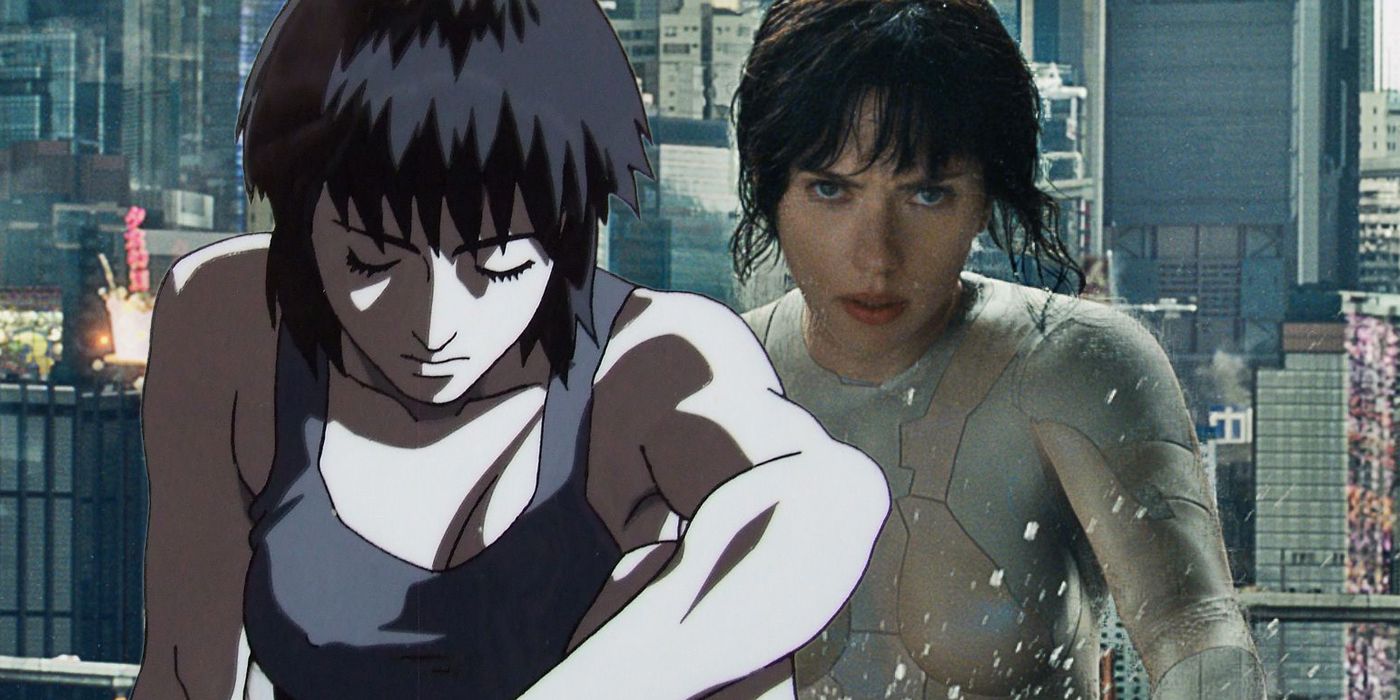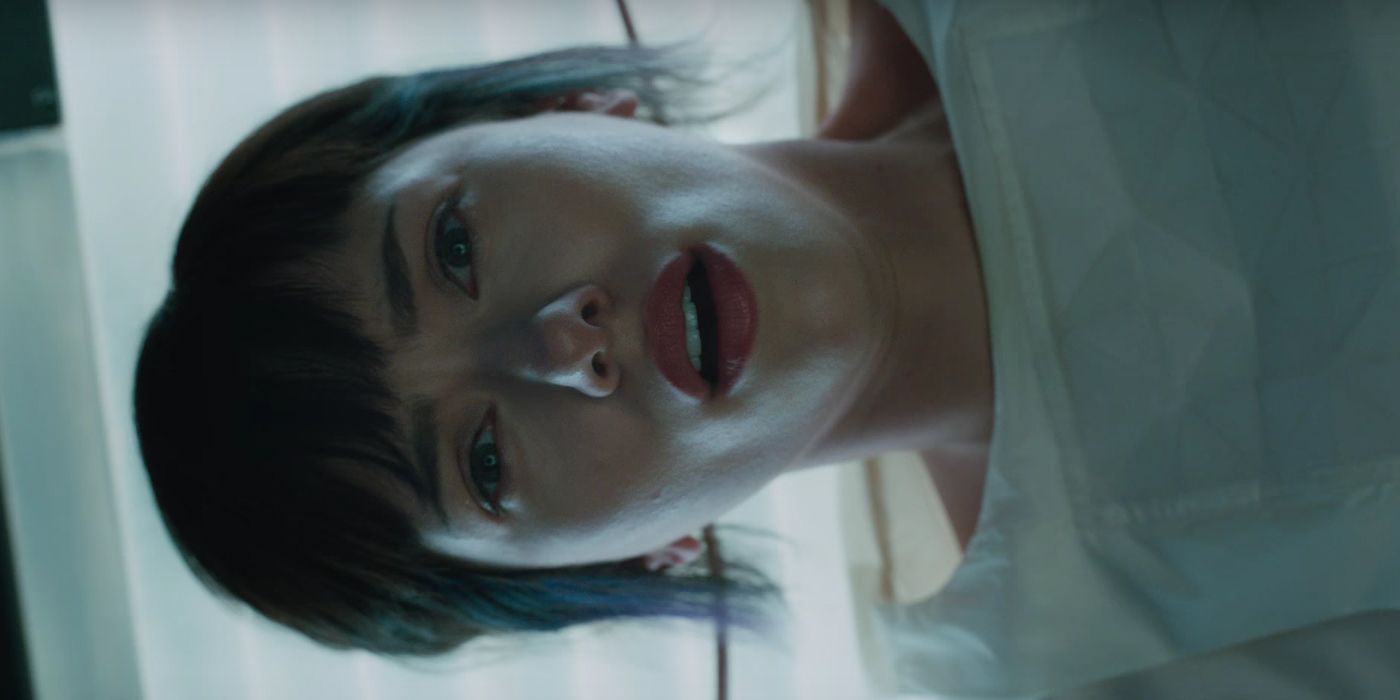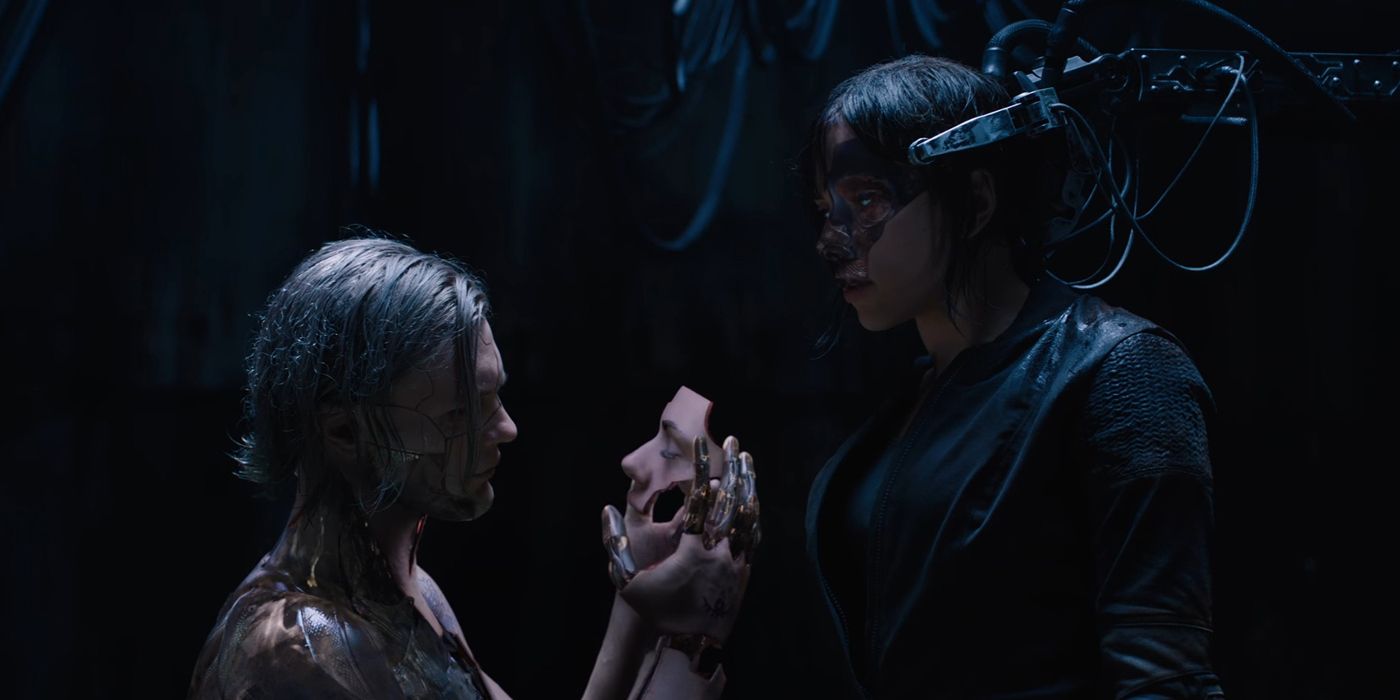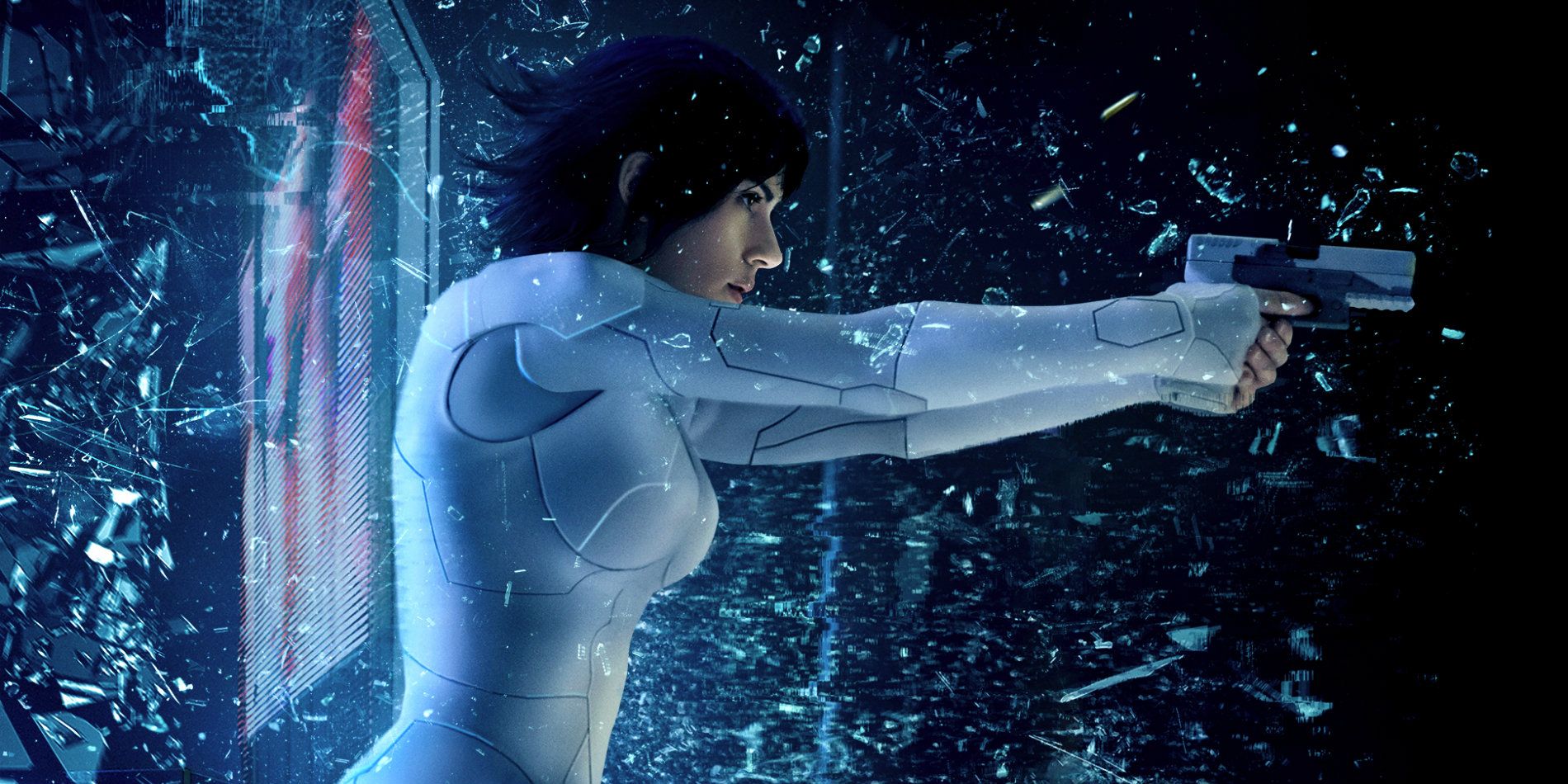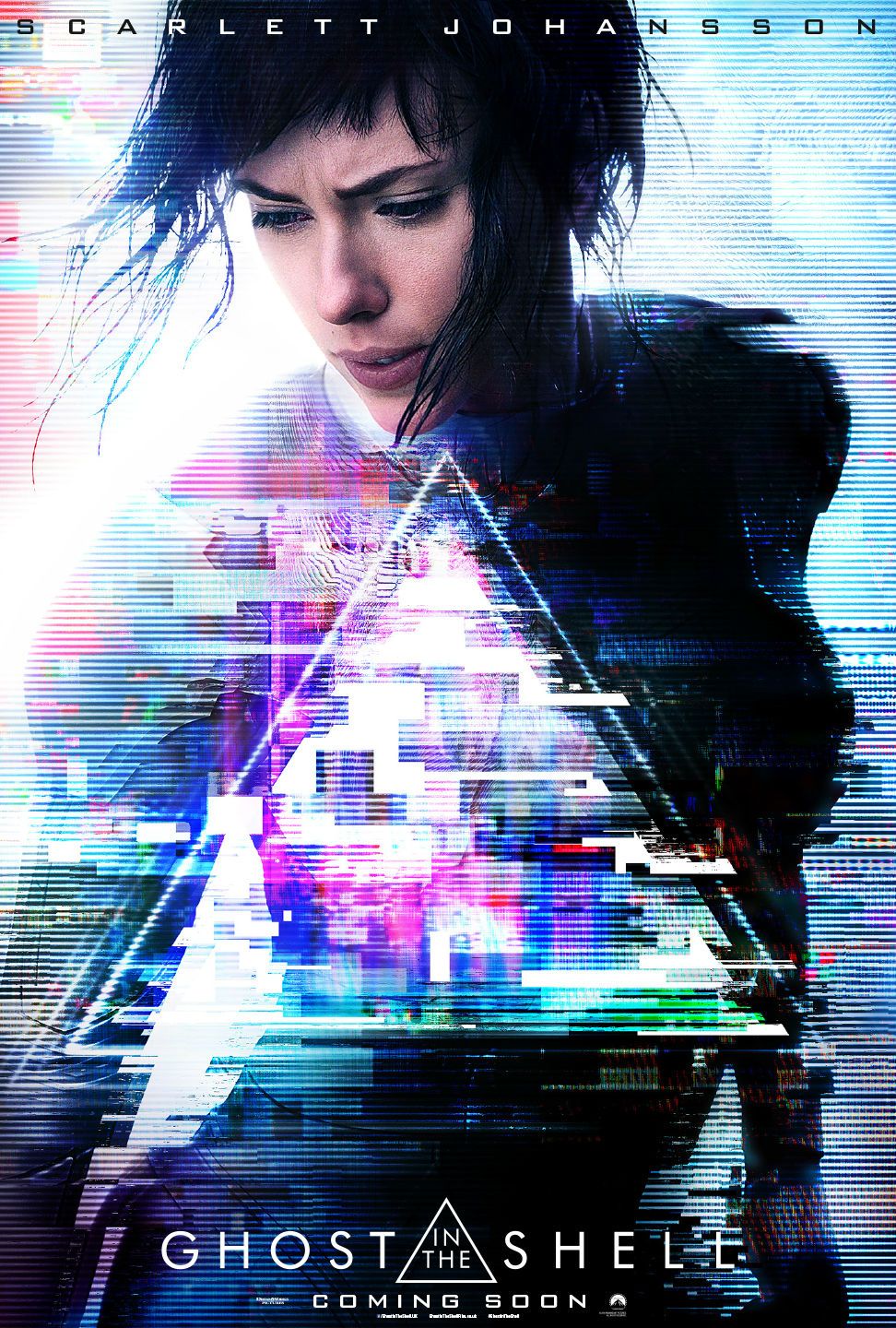[Spoilers for Ghost in the Shell (2017)]
-
Ghost in the Shell’s journey to the big screen has been dominated by accusations of whitewashing. Rupert Sanders’ live-action adaptation of the classic manga (which is also an in-part remake of the 1995 animation) was always going to be contentious for its inevitable westernization of a wholly Japanese story, but when Scarlett Johansson was cast as the series’ central icon, Major, the project seemed marked. Especially as - and this will be incredibly important later - Paramount reportedly considered trying to make her more Asian with CGI. Now, viewers are seeing that the film studio attempted to address the whitewashing controversy with an in-fiction "twist" - one that takes a drastic turn from the original movie and, frankly, is a rough sell in the live-action reboot.
From a marketing perspective, Johansson was a strong choice for the reboot - between a recurring Avengers role and other smart career choices, she’s become one of the most successful actresses ever – but creatively it was a tough pill to swallow; not only does it see a distinct character bluntly made white, it also deprives an Asian actress the opportunity to head up a major franchise. Naturally, those involved have been quick to defend the decision, with Johansson touting the importance of having female action leads, while original director Mamoru Oshii has stated there was no original ethnicity to override (which is odd, but we'll get to that). While they’re somewhat fair points, it felt like they’re fighting a losing battle. Now the film’s here, they’ve resolutely lost.
You see, Sanders’ way of addressing the whitewashing is to steer into the skid, and he fails spectacularly. Ghost in the Shell takes a lot of its ideas from the original – the ethics of cybernetic enhancement, the importance of a person's actions on their character – but the overriding theme is a desperate attempt to justify its casting that’s so tone deaf it tanks the film regardless of any other merits. Whitewashed casting is integral to the plot, and the result is something more interchangeably ill-advised and gobsmacking than Finn Jones’ entire Iron Fist press tour and Transformers: Age of Extinction’s Romeo and Juliet clause combined.
Kusanagi Is Major’s Previous Identity
Whereas the original Ghost in the Shell was all about Major’s future and her transcendence to a higher plane of being, the remake is heavily focused on her past: where does the ghost (her soul) in the robotic shell come from? The answer is far too meta-textual for comfort.
The opening scene depicts Major’s original body (crucially with her face obscured) having its brain removed and put into the robotic confines of Scarlett Johansson - where she now goes by Mira Killian. Through the involvement of Kuze (Michael Pitt’s terrorist attacking Hanka Robotics, the company that created Major) she begins to learn the given story of her creation – that she was saved from the terrorist attack that killed her immigrating parents – is a lie. Eventually Major learns that she (as well as Kuze and 97 others) was a runaway whom the nefarious Hanka (specifically snarling villain Cutter) used as the basis for their synthetic bodies. The disturbing part, though, is that her previous self was a Japanese woman who went by the character’s original name, Makato Kusanagi.
That’s right - Major’s very character is a physical representation of whitewashing. It’s troubling (and unnecessary), but what really hammers home the insensitivity is the conclusion - it's something along the lines of "oh well, she’s alive and that’s what matters, let’s just keep hunting bad guys and Scar-Jo can visit her brain’s mother every now and then in a race relation olive branch." It’s a faux happy ending that would be awkward without the racial element and is offensive with.
Now there’s nothing inherently wrong with doing this sort of race switch. That’s not to say it’s the optimal route for Ghost in the Shell to take, but there’s a way to make it work. The future Japan of the film is one dominated by multiculturalism; the streets are full of different ethnicities and, honing in on the story, Major is far from the only whitewashed character - Batou is played by Game of Thrones’ Pilou Asbæk, Kuze by Michael Pitt and Section 9 overall a grab-bag of different nationalities. Immigration in particular hangs in the air, most prominently in Major’s false backstory. You even have a solid real-world link in how Japan has an entire sub-culture built around people trying to make themselves more Caucasian. If you’re looking for something to explore in a movie that is, lest we forget, about the rise of cybernetic enhancements and the question of whether that makes you un-human, the gradual disintegration of race is a perfect topic. It even befits the expansion of the original, which in its opening establishment text cites "The advance of computerization, however, has not yet wiped out nations and ethnic groups" That clearly implies Major does have a nationality (sorry, Oshii), but means that a remake could have gone the while hog and presented a furthered world where race and nation are on the brink of being overridden.
But Ghost in the Shell either skirts over these elements (the western casting is purely for marketing purposes) or refuses to address them (there’s no proper commentary on how augmentation will change society). In fact, while the literal whitewashing dominates the narrative, in the final act especially, it never feels like it’s a theme Sanders wants to explore. Every time the movie wants to appear smart by raising a philosophical talking point, instead of letting the story lead the audience there naturally, it has characters explicitly spell it out: “Major, you’re the first of your kind, that must weigh heavy on you.”; “She poses big questions about humanity, like these I'm about to list.”; Batman Begins’ “it’s what you do that defines you” is trotted out ad nausea.
In the context of this movie, the whitewashing is strange exactly because its meaning isn’t painfully overstated. It just happens, almost like it was something a producer dictated needed to be in but the film didn’t have the grounding to include. This is perhaps best seen in how obliviously the film presents the conflict.
Whitewashers Are The Movie’s Bad Guys
The danger of a movie providing commentary on itself is that it needs to be wholly aware of what exactly it is. In last year’s X-Men: Apocalypse, Bryan Singer had Jean Grey walk out of Return of the Jedi and quip “the third movie’s always the worst” in a paper-thin jab at how reviled Brett Ratner’s The Last Stand is, totally missing that his film was also the third in its own prequel series (and wound up being almost as bad as X-Men 3). It was a laughable lack of self-awareness, but in terms of criticism is more an emblematic issue than something ingrained - in that case it didn’t dominate the entire film. The third act of Ghost in the Shell is essentially that joke’s obliviousness screamed from the top of Sanders' lungs.
In a parallel twist the original anime, it’s revealed that the instigating terrorist threat is in fact simply a tortured, misunderstood product of extreme experimentation (in 1995 a rogue digital sentience, in 2017 a precursor to the Major) and the true villains are the ones who created him. These bad guys' evil scheme is that they've been taking Japanese people and putting them in Caucasian looking bodies, meaning they're essentially whitewashers; the villains of Ghost in the Shell are avatars for the filmmakers. This is latent subtext that seems to have completely gone over the heads of everybody involved because there’s no attempt to develop it further. We glimpse a smidgen of regret in the enacting scientists, but that seems more to give Juliette Binoche a redemptive arc than it is make a statement.
Just imagine a big, serious tentpole movie that willingly positioned itself as the antagonistic force and used the restrictions placed on it as a way to present the future. You make the villains metaphorically some part of Hollywood, and through their defeat show how you would like things to be in an idealized future. It’s the sort of trick we’ve seen done wonderfully in the like of The Lego Movie (a toy-based film all about the power of imagination and how bad conglomerates are), but without an overtly comedic shield it could be something genuinely conversation-changing. How does Ghost in the Shell do it? They kill the baddies and go back to normal; if the film was trying to make a point with this – and, again, it doesn’t seem to operating on a high enough level to be doing that – then its moral is that we should get rid of the really, really bad eggs and just accept things the way they are. Talk about dystopia.
Going deep into the movie's development, however, reveals something more disturbing. Following the first image of Johansson in the role was released, the aforementioned story of CGI alteration broke. It was later refuted by the studio, with Paramount saying, "A test was done related to a specific scene for a background actor which was ultimately discarded. Absolutely no visual effects tests were conducted on Scarlett’s character and we have no future plans to do so." So, even in this toned down version of the story, this - while rejected swiftly (duh) - was considered. The specifics are vague, but does it sound like the optimal creative choice for a movie trying to explore race transference to explicitly lather that on CGI yellowface? Or does it speak of a production unsure of how the play its troubled hand and desperately trying to find the best way out of controversy?
Conclusion
As an actual movie, Ghost in the Shell is really rather unremarkable. It's not a quote-unquote disaster, just wholly uninspired; the pretty visuals are usually ripped from the original anime (and its precursor, Blade Runner) with the only really inspiring action set-pieces those "storyboarded" in the manga, and while Scarlett Johansson makes a pretty good questioning robot (especially in the way she subtly controls her eye movement) she's ultimately lumbered with an iffy story. It's in this whitewashing element (and the wider flubbing of any thematic depth) where it becomes truly crass and unrecommendable.
If there’s one moral we can take from this it’s that whitewashing isn’t going anywhere, in part because those in a position to change things aren’t making the steps. We’re not in the days of racially insensitive casting like John Wayne as Genghis Kahn or Mickey Rooney as Mr. Yunioshi, but as the all too regularly debates of a character going from one ethnicity to Caucasian spark online (or, conversely, opportunities where non-white casting would be a strong move aren’t taken) it's clearly still a major issue. To expect Rupert Sanders and co. to directly fix it may have been a bit much, but they seem to think a token half-baked narrative justification absolves them of blame.
A Scarlett Johansson-led Ghost in the Shell was always going to have racial recasting issues thrown against it, but had the film itself pled the fifth then it could have at the very least hidden behind the inevitable assumption it was the product of marketing demands. Instead it tries desperately to justify its decision without fully considering what it’s saying. If it was at least a remotely smart movie there may be a trace of realization it’s on the wrong side, but this is really just the oppressor proclaimed the oppressed's problems over because, hey, things are alright for us now, aren't they?

